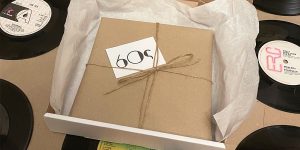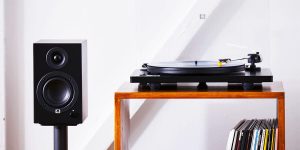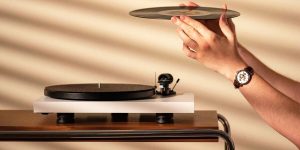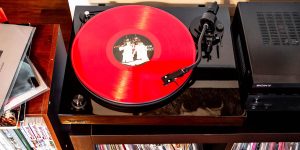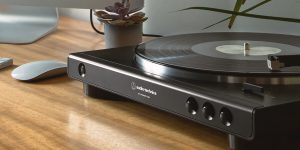If you’re an avid collector or a music enthusiast, you understand the value of these cherished vinyl gems. However, maintaining vinyl records in optimal conditions requires particular care and attention. I am going to devote you to the art of preserving your vinyl collection with useful tips and recommendations. We’ll explore the golden rules of storing vinyl records. Let’s ensure that your vinyl records stand the test of time and continue to bring joy to your ears.
Preparing your records for storage
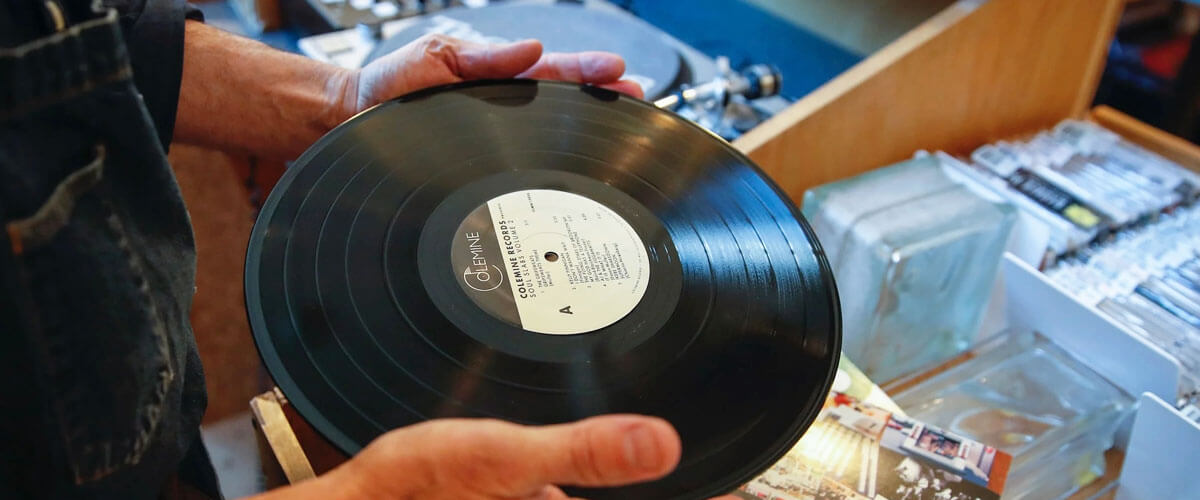
Properly preparing and storing records is essential for maintaining their quality and longevity. By following the steps I’m going to describe, you can ensure your vinyl records remain in excellent condition, providing you with high-quality sound for many years to come.
Cleaning process of the records
You should ensure the records are free from dust, dirt, and contaminants that could cause damage over time. Here’s a step-by-step guide to properly clean your vinyl records:
- Gather the necessary supplies: anti-static record brush or carbon fiber brush, vinyl record cleaning solution (make sure it’s suitable for vinyl records), soft microfiber cloth or lint-free cotton cloth, and record cleaning machine (optional but recommended for deep cleaning).
- Remove the vinyl records from their sleeves and dust jackets: clean the dust jackets separately if they are dusty or dirty.
- Use a record brush: start with an anti-static record brush or carbon fiber brush to gently remove surface dust and debris from the vinyl. Hold the brush at a slight angle and rotate the record as you brush it in the direction of the grooves.
- Deep cleaning (optional): you can use a record-cleaning machine. These machines use a combination of cleaning fluid and gentle brushing to clean deep within the grooves.
- Manual cleaning: you can manually clean the vinyl using a vinyl record cleaning solution. Apply a few drops of the cleaning solution to the microfiber cloth or a lint-free cotton cloth.
- Wipe the vinyl surface: be careful not to press too hard or use circular motions, as this could damage the grooves.
- Rinse and dry: if the cleaning solution leaves residue on the record, use a separate dry cloth to wipe it off. Allow the vinyl to air dry for a few minutes until any remaining moisture evaporates.
- Clean the dust jackets: Use a separate clean cloth to wipe down the dust jackets and remove any dust or dirt. Ensure they are completely dry before reassembling with the vinyl records.
Additional recommendations for the correct use of vinyl records
In order to prolong the good condition of the vinyl records, cleaning them is not the only thing you should do. Handling them with care also significantly influences the sound quality of the records. Follow my tips to handle vinyl records properly:
- Touch the records with washed hands only: This will prevent oils, dirt, or contaminants from getting on the record’s surface..
- Hold records by the edges: Avoid touching the playing surface (the grooved area) with your fingers to prevent leaving fingerprints or smudges.
- Avoid touching the grooves: Touching them directly, even with clean hands, can cause microscopic scratches that impact sound quality over time.
- Use the outer edge to handle: This minimizes the risk of touching the grooves accidentally.
- Lower gently onto the turntable: Rough handling can cause scratches or damage to the delicate tonearm and stylus.
- Use a quality turntable mat: A dirty or worn-out mat can transfer debris to the record or cause additional friction, leading to scratches.
- Use a protective sleeve: If you need to transport a vinyl record, use a protective sleeve to shield it from potential scratches or contaminants.
- Clean your turntable and stylus: A clean setup reduces the risk of transferring contaminants to the vinyl record during playback.
- Be cautious with record adapters: When using 45 RPM record adapters, ensure they are clean and fit securely. Improperly fitted adapters can scratch the center of the record or even damage the spindle hole.
Maintaining inner sleeves
This is an important part of vinyl record maintenance to protect the records from scratches, static, and other potential damage. Let me explain in detail what you should do:
- Remove the vinyl record from the inner sleeve: Avoid touching the playing surface or grooves.
- Examine the inner sleeve: Common issues include tears, creases, mold, mildew, and signs of degradation.
- Check for scratches or residue: These blemishes can adversely affect sound quality.
- Inspect for static buildup: If the inner sleeve generates a lot of static, it can attract dust and debris to the vinyl record’s surface, potentially causing damage.
- Replace damaged inner sleeves: There are various types of inner sleeves available, such as anti-static, anti-scratch, and archival-quality sleeves. Anti-static inner sleeves are particularly beneficial.
- Clean the vinyl record: Before placing it, make sure the record is clean and free from dust and debris.
- Insert the vinyl record into the new inner sleeve: Gently slide the clean vinyl record back into the new inner sleeve. Be cautious not to touch the grooves or the playing surface during this process.
How to store the vinyl records
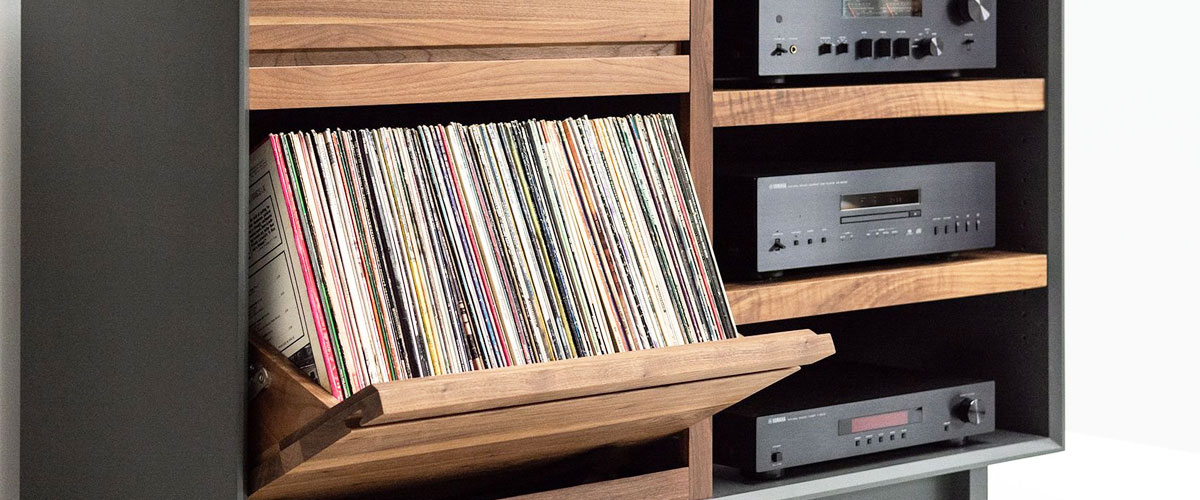
To preserve the quality and longevity of vinyl records, it’s important to know how to store records properly. Therere a few key aspects to consider when storing vinyl records. I recommend maintaining the following rules to keep the records.
Check for temperature and humidity level
The recommended temperature for vinyl record storage is between 60°F and 70°F. Avoid extreme temperature fluctuations, as rapid changes in temperature can cause the vinyl to expand and contract, leading to warping or cracking. Don’t forget to maintain a relative humidity level between 40% and 60%. High humidity can encourage mold growth, while low humidity can cause the vinyl to become brittle. Using a humidifier can help regulate humidity levels if necessary.
Keeping records away from the sunlight
Store vinyl records away from direct sunlight and sources of ultraviolet light. UV rays can damage the vinyl. Prolonged exposure to sunlight can cause the record’s label and cover art to fade. This can reduce the aesthetic appeal and collectible value of the vinyl. Direct sunlight can cause the outer record sleeves and dust jackets to deteriorate, leading to brittleness, fading, and weakening of the materials.
Minimizing contact with dust and contaminants
If you notice visible dust or contaminants on the vinyl surface, use a proper vinyl record cleaning solution with a soft, lint-free cloth to clean it gently. Regularly clean the area where you store and play your vinyl records. Dust and contaminants from the surroundings can settle on the records’ surfaces, affecting sound quality and causing unnecessary wear. Keep your vinyl collection away from smoking areas, as smoke particles can settle on the records and degrade sound quality. When not in use, cover the turntable’s tonearm and the vinyl record’s spindle hole with their covers to protect them from dust.
Storing vinyl records vertically
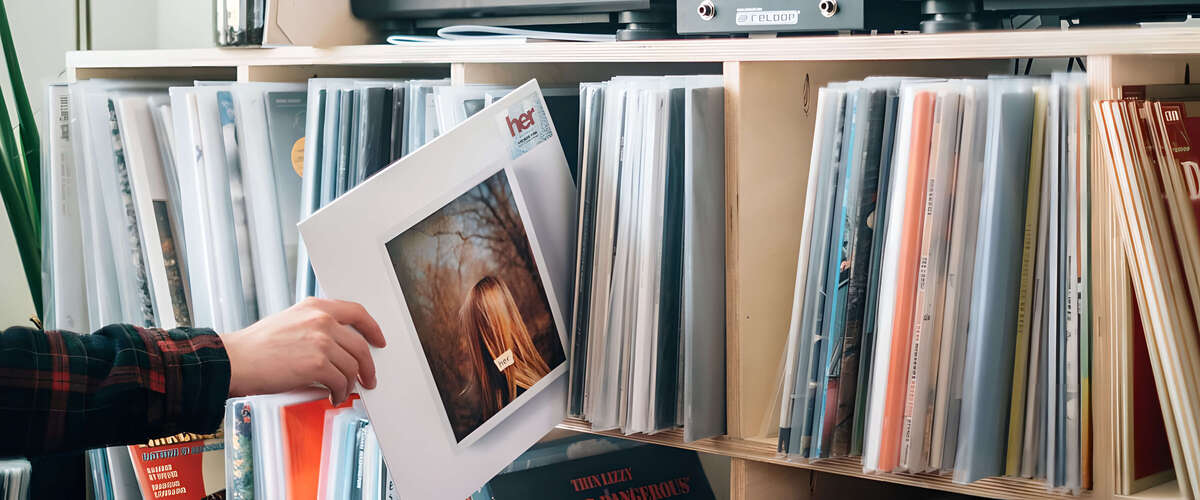
When it comes to preserving the quality and longevity of vinyl records, the golden rule is “vertical storage.” Storing vinyl records vertically, i.e., standing them upright like books on a shelf, is the best way to ensure their protection and prevent potential damage. This practice has become the standard recommendation among vinyl enthusiasts and collectors.
By adhering to proper record storage and following best practices for their care, you can enjoy your collection for years without compromising sound quality or condition.
The importance of vertical storage for vinyl records
If you wonder what’s so special about this rule, I will explain how exactly it helps preserve the quality and longevity of vinyl records.
Prevents warping: Storing records horizontally or stacked can cause them to warp over time due to the weight of other records pressing down on them. Vertical storage ensures that the weight is evenly distributed across the entire surface.
Protects the grooves: When records are stored vertically, the grooves are less likely to come into contact with other records or surfaces, minimizing the potential for scratches or abrasions.
Preserves album covers: Storing records vertically protects the covers from bending, creasing, or getting damaged, allowing them to remain in pristine condition.
Easy retrieval: You can quickly flip through your collection and locate the desired record without having to lift or move multiple records, as you would with horizontal storage.
Efficient use of space: It allows you to fit more records on a single shelf without compromising their condition, making it a practical choice for those with limited storage space.
Air circulation: Vertical storage allows for better airflow between them, reducing the risk of mold or mildew growth.
Avoiding warping and ring wear on vinyl
Warping refers to the bending or distortion of the record, while ring wear is the damage that occurs on the album cover due to friction with other records. I frequently use the next to prevent these issues from happening:
- Vertical storage.
- Use of inner sleeves.
- Avoid overpacking.
- Avoid leaning records.
- Use outer sleeves.
Use my advice and treat your vinyl record collection with care. Then you will have them for many years and in perfect condition!
We are supported by our audience. When you purchase through links on our site, we may earn an affiliate commission at no extra cost to you.
Our newsletter
* We will never send you spam or share your email with third parties

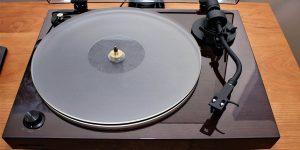

![Best Turntables Under $100 [Reviewed and Tested]](https://righttechadvice.com/wp-content/uploads/2023/09/best-turntable-under-100-300x150.jpg)
![Best Turntables Under $300 [Reviewed and Tested]](https://righttechadvice.com/wp-content/uploads/2023/10/best-turntable-under-300-review-300x150.jpg)
![Best Record Players Under $200 [Reviewed and Tested]](https://righttechadvice.com/wp-content/uploads/2023/10/best-turntable-under-200-300x150.jpg)




